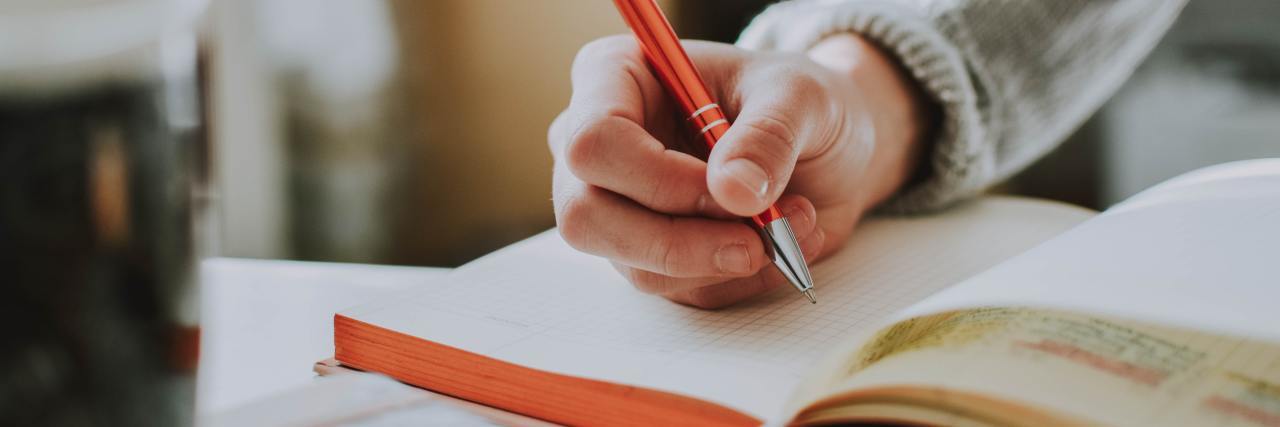I’ve been “journaling” for years — never so much for my mental health as for the simple fact that it’s nice to be able to look back at things that have happened with a new perspective and relive the good times you’ve had. When Gigi Hadid recently spoke about this new journaling technique of having both a “good journal” and a “bad journal,” so I thought it sounded interesting and thought I’d try it out. After all, it’s not like I’d be writing more — just separately. Right?
I decided rather than typing my journals like I usually do, I would actually write them. For some strange reason I hoard blank notebooks, so I figured I might as well put two of them to use. My wrist would later regret the choice to write by hand, but it sounded like a good idea at the time.
It was simple: One would be for the good stuff that day, and one would be for the bad stuff. Despite decades of struggling with depression and anxiety, I’ve been stable for a year or so and I am in a great relationship with a caring supportive partner. So, at first, the “good” stuff was easy. But after a few days, I realized how superficial I was being — listing off the fun things we had done or the great dinner he made, but not really thinking about how I had felt throughout the day. I was going through the motions that I think a lot of people with depression do — I was looking at the obvious stuff (good or bad), but not daring to look much deeper.
With a little soul-searching, I realized I had plenty of “bad” to write about too. When I saw my reflection in the bathroom, I immediately thought about how I need to dye my hair and have better skin. When I watched our dog patrol the window looking for a squirrel, I thought “I wish I was as fearless as him” (yes, I compared myself to my pit bull — don’t judge). When I was sad that my usual backyard bird friends hadn’t made an appearance that day, I wanted to give up on even having bird feeders.
I realized that acknowledging the bad and the good was a balancing act — one I had far from mastered.
I try so very hard to focus on the good and positive in life that I often don’t acknowledge my own negative thoughts anymore. I want to pretend I don’t have them, as if ignoring them will make my depression non-existent. But seeing that they are there and being willing to work with them turns out to be just as important as seeing the good things.
There was a time when I would have been hard-pressed to find a single “good” thing to write about in a day. And yet, looking back, I can see that it was the same thought process. I was drowning in bad, and it made the good seem trivial, and not worth paying attention to.
After two weeks of trying it, I realized having two journals changes the way I view my day — or even a single event. Because I have to really think about it. I have to see that there is good and bad in everything. That doesn’t mean seeing the good in a bad situation magically makes it better — it doesn’t — but self-awareness and understanding can go a surprisingly long way in helping manage mental health and life in general.
Having two journals for the “good” and the “bad” helped me really think about my day and the things that happened in it. It helped me see things differently. But it also helped me accept that nothing is ever all good or all bad. And that was a great thing to understand better than I have before.
Photo by lilartsy on Unsplash

